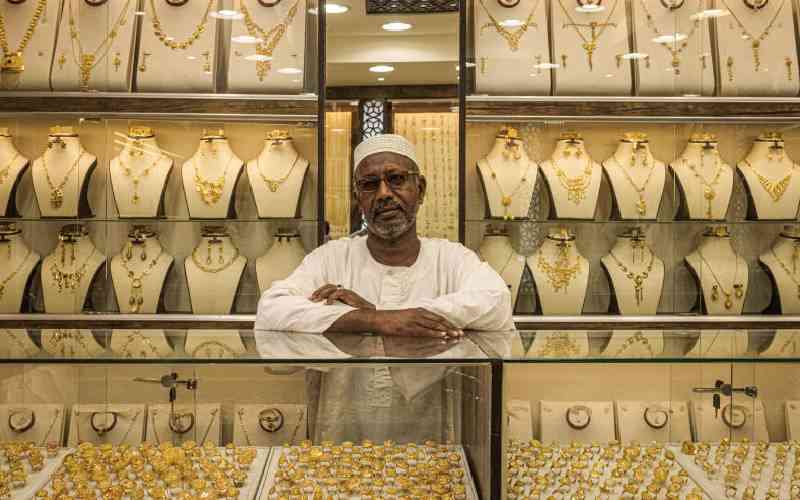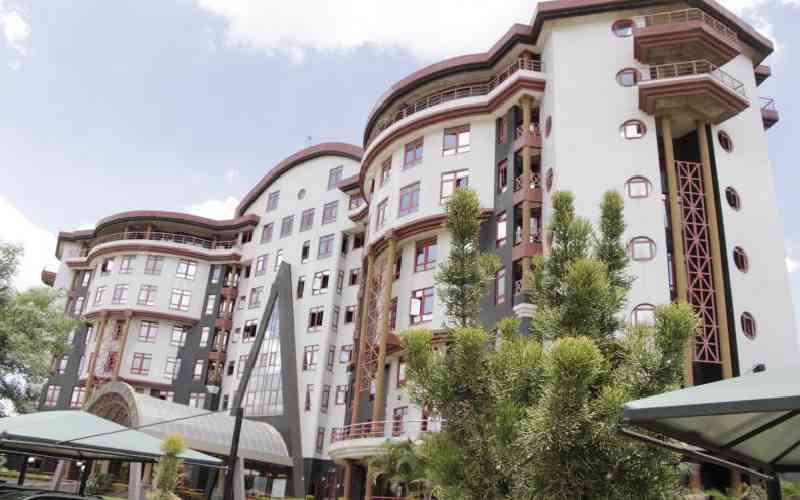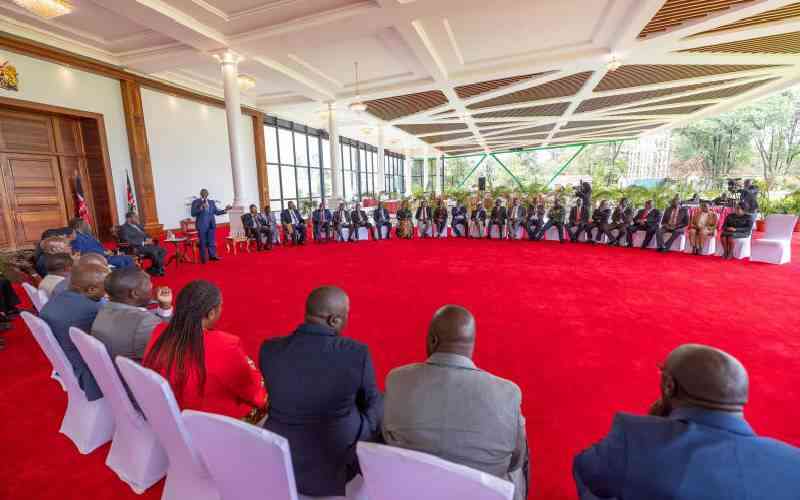 |
|
pan paper mills in webuye |
Western; Kenya: After five years in the doldrums, the Webuye-based Pan Paper Mills is expected to roar back to life before the close of the year.
Also expected to resume full production in the first quarter of next year are Kisumu’s iconic Kicomi and Eldoret’s Rivatex factories, according to a government delegation that recently took part in an international trade fair in Beijing, China, and another that toured Singapore last month.
Industrialisation Principal Secretary Wilson Songa says details of investments in the three giant factories are being worked out and confirmed that the contract for the revival of Pan Paper was executed on Tuesday with an investor whom he declined to name.
Dilapidated state
However, The Standard on Saturday has reliably established through Webuye East MP Alfred Sambu that the contract was awarded to a Chinese firm, which has requested that duty levied on imported paper be raised from the current 10 per cent to 25 per cent.
Senior officials in the Ministry of Agriculture toured Singapore, India and China last month to establish the kind of textile production technology available. Investors for the Kicomi and Rivatex projects are likely to be identified from these countries.
“Pan Paper is a bad sell (because of its current dilapidated state). For this reason, the investor has laid out very difficult conditions, but the Government is determined to revive the factory. It will be in the interest of all that it resumes operations,” Dr Songa said.
Pan Paper Mills is a sensitive political issue in the Western Kenya region, and in recent elections — presidential and parliamentary — it dominated the campaign agenda. In some cases local people complained that the governing clique was deliberately “promoting poverty” to disempower them to keep leaders and voters beholden to different interests.
The collapse of Pan Paper in the mainly agricultural region followed in the path of the ailing sugar and dairy industries.
According to the Kenya Sugar Board, the Western and Nyanza areas have the capacity to produce more than 20 million tonnes of sugar against the country’s consumption of roughly a million tonnes per annum.
The textile and apparel industry has not fully benefited from the African Growth Opportunity Act (Agoa), a US law that extends access of the American market to 41 African countries — Kenya included.
A report by Compete, a competitiveness and trade expansion programme under the US Agency for International Development (USAid), and points out that Kenya has not fully exploited the opportunity as investors in the Export Processing Zones (EPZ) import raw material.
Under the new initiative to revive Kicomi and Rivatex, the parliamentary committee that is looking into the viability of the two factories wants the raw material to be sourced locally.
“That means land has to be set aside for cotton production. The Government will have to lease land from farmers to provide the raw material,” says Sambu.
The textile factories will delay resumption of full operations because the technology they have is virtually obsolete.
Stay informed. Subscribe to our newsletter
High costs
According to the USAid report: “The available statistics indicate that between 2008 and 2009, Kenya’s textile and apparels exports to the US under Agoa and GSP (Generalised System of Preferences) continued to decline by about 24 per cent ($232 million, or more than Sh20 billion, in 2008, and $195 million, or about Sh17 billion, in 2009). The persistent declining trend is indeed worrying, with January to June 2010 compared to the same period (January-June 2009) having recorded a 24 per cent.
“Without appropriate mitigation measures, it is apparent that the textile-apparel sector performance will be worse in 2010 and subsequent years. The decline has been attributed to the uncompetitiveness of the sector due to high production costs, including cost of electricity.”
In the past, political leaders in Western Kenya made it a condition for the Government to revive the factory in exchange for support, but neither side has kept its part of the bargain. However, unlike previous years where the State was a major shareholder in Pan Paper, the Government has agreed to offload its shares to the private investor who should run it as a profitable business.
“This time round, the factory will resume production. There are no two ways about it,” says Songa.
Over the years, the campaign to revive the paper mill has been championed by Sambu, who says renewed industrialisation must spread to Nyanza and the North Rift which have high poverty rates as a result of low economic investments.
The sugar industry that was the backbone of the region’s economy has slumped as importers manipulated the system to bring in contraband sugar.
“We have set our eyes on three key industries that underlined the economy of western Kenya. We have identified an investor for Pan Paper Mills, who should come on board as soon the receiver agrees to a withdrawal plan. During our tour of China, we identified a potential investor in the paper factory, which we hope will be up and running by the close of the year. Kicomi and Rivatex should be operational in the first quarter of next year,” says Sambu.
As opposed to the past when the factory produced raw material for paper converters based in Mombasa, Thika and Nairobi, in the agreement that was negotiated with Chinese paper manufacturers, “the conversion will be done at the source (Webuye) to make the final product more competitive in the regional markets, said Sambu.
“The ultimate objective is to make Webuye the industrial hub of western Kenya because of its strategic location. It is surrounded by three major rivers — Nzoia, Kuywa and Ndivisi — that should also be harnessed to provide water and hydropower. It also served the Kenya-Uganda railway, and lies on the Kenya-Uganda Road that also serves the Democratic Republic of Congo, Rwanda, Burundi and South Sudan.”
Before the Kenyan delegation flew to China, the Parliamentary Committee on Industrialisation had toured the three factories in preparation for their revival.
In one of the recommendations, the committee observed that there was a serious shortage of raw material, and appealed to the Government to set aside land for the production of cotton in the greater Nyanza and western regions.
Steady supply
As for Pan Paper, the Principal Secretary says the Government is in talks with firms that own land devoted to agro-forestry.
“Local people will also be encouraged to venture into agro-forestry to ensure a steady supply of the wood pulp,” he says.
The cost of reviving Kicomi and Rivatex is yet to be worked out. For the paper mill, Industrialisation and Enterprise Development Cabinet Secretary Adan Mohammed says it will cost the new investor Sh3 billion to bring the factory back to life. Other estimates put the figure at $80 million (Sh7.2 billion) for Pan Paper to become fully operational.
 The Standard Group Plc is a
multi-media organization with investments in media platforms spanning newspaper
print operations, television, radio broadcasting, digital and online services. The
Standard Group is recognized as a leading multi-media house in Kenya with a key
influence in matters of national and international interest.
The Standard Group Plc is a
multi-media organization with investments in media platforms spanning newspaper
print operations, television, radio broadcasting, digital and online services. The
Standard Group is recognized as a leading multi-media house in Kenya with a key
influence in matters of national and international interest.
 The Standard Group Plc is a
multi-media organization with investments in media platforms spanning newspaper
print operations, television, radio broadcasting, digital and online services. The
Standard Group is recognized as a leading multi-media house in Kenya with a key
influence in matters of national and international interest.
The Standard Group Plc is a
multi-media organization with investments in media platforms spanning newspaper
print operations, television, radio broadcasting, digital and online services. The
Standard Group is recognized as a leading multi-media house in Kenya with a key
influence in matters of national and international interest.






